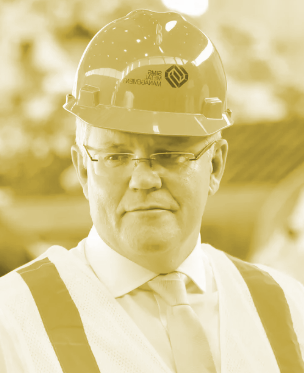PM guns for gas recovery
 The Morrison government is preparing a sweeping intervention into Australia’s gas industry, backing millions of dollars worth of new power stations, pipelines and other infrastructure.
The Morrison government is preparing a sweeping intervention into Australia’s gas industry, backing millions of dollars worth of new power stations, pipelines and other infrastructure.
The Prime Minister is visiting the industrial hub of Newcastle to announce a $52.9 million package this week.
The plan is for the Federal Government to help the gas industry tap into supplies in mines not being used, as well as increase production, and build new pipelines to reduce domestic costs.
The government says its plan will bring down electricity prices and stabilise Australia’s own stockpile, while also placing gas as the ‘backbone’ for a lower-emissions national electricity market.
It includes Commonwealth support for five new gas fields and more pipelines to transport gas to Sydney, Melbourne and other major markets.
The government is afraid that NSW will see a similar price spike to one that occurred in Victoria after the closure of the Hazelwood coal-fired power station, when wholesale prices leapt by 85 per cent at one point.
AGL plans to shut the Liddell coal-fired power station in April 2022 and replace it with renewable energy and battery storage. However, the new government policy is to help build a gas-fired power station nearby.
It is imposing a “dispatchable capacity investment target” of 1000 megawatts of electricity in NSW by the end of April 2021, and is working on policies to make this amount of additional energy to come online by the end of 2023.
Snowy Hydro - an entity wholly owned by the Commonwealth - has been tasked plans to build a new gas-fired power station at Kurri Kurri in the Hunter Valley. This would guarantee electricity supply to the nearby Tomago smelter, which makes about 25 per cent of Australia's aluminium.
The Federal Government says it will change national energy laws so that Tomago and other large industrial loads can be compensated for providing stability to the east-coast electricity grid.
Despite Australia being one of the world’s largest gas producers, Australian customers pay as much as 25 per cent more for gas than international customers.
The Federal Government says it will consider a “potential gas reservation” regime to set some of the future gas aside for the Australian market.
It has been celebrating the launch of new fields, delivering five Strategic Basin Plans beginning with the Beetaloo Basin in the Northern Territory, followed by the North Bowen and Galilee fields in Queensland.
Its major priority is the Narrabri gas field in northern NSW, which is being developed by Santos and is awaiting a state regulatory decision, and federal environmental approval.
Insiders say the Government is telling the gas industry; “If you don't fix it, we will”.
This includes specifying the best way to set a transparent price for the domestic market, using a gas hub at Wallumbilla, near the Queensland town of Roma. Wallumbilla is considered a key point in a potential gas pipeline south to NSW and on to Victoria.
The Government says it will underwrite plans by private companies to build the new pipelines.
The chair of the federal government's COVID-19 Commission Advisory Board is business executive Nev Power – who was forced to step down from his role as deputy chairman of Strike Energy (a West Australian company currently developing a gas field) when he joined the board.
Mr Power is also a former chief executive of mining group Fortescue Metals, and has heavily promoted gas development as a key way to boost economic growth after the coronavirus crisis.
Mr Power came up with the idea of an underwriting approach last month. The Prime Minister has now taken it up as an official plan.
The Prime Minister has taken up the line in spite of several government authorities seeing no need for a substantial increase in gas consumption over the coming decades.
Labor energy spokesman Mark Butler has questioned the need for underwriting new gas projects, but Labor resources spokesman Joel Fitzgibbon has indicated some support for the concept.
The Greens and the environmental movement are opposed to the increased use of fossil fuels.







 Print
Print